
4
English
15. Beware of the tool’s kickback.
Do not approach the top of the tool with your head etc.
during operation. This is dangerous because the tool
may recoil violently if the nail currently being driven in
comes into contact with a previous nail or a knot in the
wood.
16. Be careful of double fi re due to recoil.
If the push lever is unintentionally allowed to re-contact
the workpiece following recoil, an unwanted fastener will
be driven.
In order to avoid this undesirable double fi re,
○ Intermittent operation (Trigger fi ring)
1) Set the switching device to FULL SEQUENTIAL
ACTUATION MECHANISM.
2) Pull the trigger rapidly and fi rmly.
○ Continuous operation (Push lever fi ring)
1) Do not press the nailer against the wood with
excessive force.
2) Separate the nailer from the wood as it recoils after
fastening.
17. Take care when nailing thin boards or the corners
of wood.
When nailing thin boards, the nails may pass right
through, as may also be the case when nailing the
corners of wood due to deviation of the nails. In such
cases, always make sure that there is no one (and
nobody’s hands or feet; etc.) behind the thin board or
next to the wood you are going to nail.
18. Simultaneous nailing on both sides of the same
wall is dangerous.
Under no circumstances should nailing be performed on
both sides of a wall at the same time. This would be very
dangerous since the nails might pass through the wall
and thus cause injuries.
19. Do not use the power tool on scaff oldings, ladders.
The power tool shall not be used for specifi c application
for example:
– when changing one driving location to another
involves the use of scaff oldings, stairs, ladders or
ladder alike constructions, e.g. roof laths,
– closing boxes or crates,
– fi tting transportation safety systems e.g. on vehicles
and wagons
20. Remove all remaining fasteners and battery from
nailer when:
1) doing maintenance and inspection;
2) checking proper operation of push lever and trigger;
3) attaching or removing the nose cap;
4) clearing a jam;
5) it is not in use;
6) leaving work area;
7) moving it to another location; and
8) handing it to another person.
Never attempt to clear a jam or repair the Nailer unless
you have removed battery and all remaining fasteners
from the Nailer.
The Nailer should never be left unattended since people
who are not familiar with the Nailer might handle it and
injure the themselves.
21. Remove battery from nailer when:
1) loading nails;
2) turning the adjuster.
22. Disconnect the battery.
When attaching and detaching the nose cap, disconnect
the battery.
When attaching the accessory nose cap to the tip of
the push lever and when detaching it, make sure to
disconnect the battery beforehand. It is very dangerous
for a nail to be fi red by mistake.
23. The operating environment for this device is
between 0°C and 40°C so ensure use within this
temperature range. The device may fail to operate
below 0°C or above 40°C.
24. Always charge the battery at an ambient
temperature of 0–40°C.
A temperature of less than 0°C will result in over charging
which is dangerous. The battery cannot be charged at a
temperature greater than 40°C.
The most suitable temperature for charging is that of
20–25°C.
25. Do not use the charger continuously.
When one charging is completed, leave the charger for
about 15 minutes before the next charging of battery.
26. Do not allow foreign matter to enter the hole for
connecting the rechargeable battery.
27. Never disassemble the rechargeable battery or
charger.
28. Never short-circuit the rechargeable battery.
Short-circuiting the battery will cause a great electric
current and overheat. It results in burn or damage to the
battery.
29. Do not dispose of the battery in fi re.
If the battery is burnt, it may explode.
30. Using an exhausted battery will damage the
charger.
31. Bring the battery to the shop from which it was
purchased as soon as the post-charging battery life
becomes too short for practical use.
Do not dispose of the exhausted battery.
32. Do not insert objects into the air ventilation slots of
the charger.
Inserting metal objects or fl ammable into the charger air
ventilation slots will result in an electrical shock hazard or
damage to the charger.
33. NEVER allow magnets (or similar magnetic devices)
to be adjacent to the nailer, because the nailer has a
magnetic sensor inside.
Doing so will cause a failure or risk of injury by
malfunction.
34. Resting the unit after continuous work.
35. The power tool is equipped with a temperature
protection circuit to protect the motor. Continuous
work may cause the temperature of the unit to rise,
activating the temperature protection circuit and
automatically stopping operation. If this happens,
allow the power tool to cool before resuming use.
36. This product may cease to operate when an
abnormality is detected. In such cases, check
the items listed under “TROUBLESHOOTING” on
page 17.
37. Do not give a strong shock to the switch panel or
break it. It may lead to a trouble.
CAUTION ON LITHIUM-ION BATTERY
To extend the lifetime, the lithium-ion battery equips with the
protection function to stop the output.
In the cases of 1 to 3 described below, when using this
product, even if you are pulling the switch, the motor may
stop. This is not the trouble but the result of protection
function.
1. When the battery power remaining runs out, the motor
stops.
In such a case, charge it up immediately.
2. If the tool is overloaded, the motor may stop. In this
case, release the switch of tool and eliminate causes of
overloading. After that, you can use it again.
3. If the battery is overheated under overload work, the
battery power may stop.
In this case, stop using the battery and let the battery
cool. After that, you can use it again.
Furthermore, please heed the following warning and caution.
WARNING
In order to prevent any battery leakage, heat generation,
smoke emission, explosion and ignition beforehand, please
be sure to heed the following precautions.
0000BookNT1865DBAL.indb40000BookNT1865DBAL.indb4 2019/03/2511:25:312019/03/2511:25:31

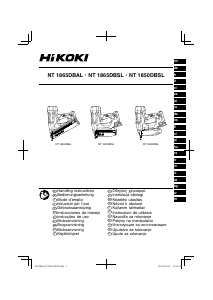


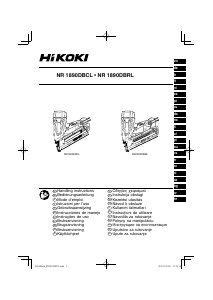
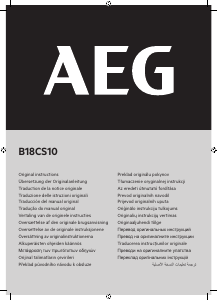
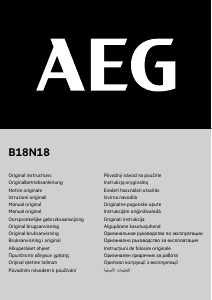
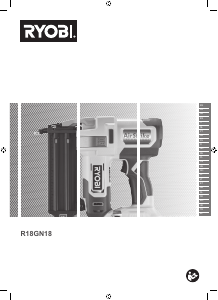
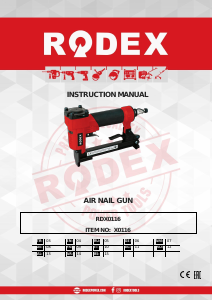
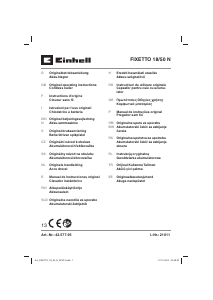

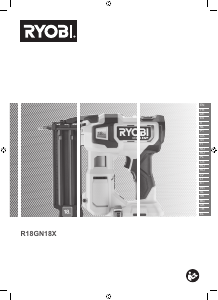
Pridružite se razgovoru o ovom proizvodu
Ovdje možete podijeliti što mislite o Hikoki NT 1865DBAL Pištolj za čavle. Ako imate pitanja, prvo pažljivo pročitajte priručnik. Zahtjev za priručnik možete izvršiti putem našeg obrasca za kontakt.